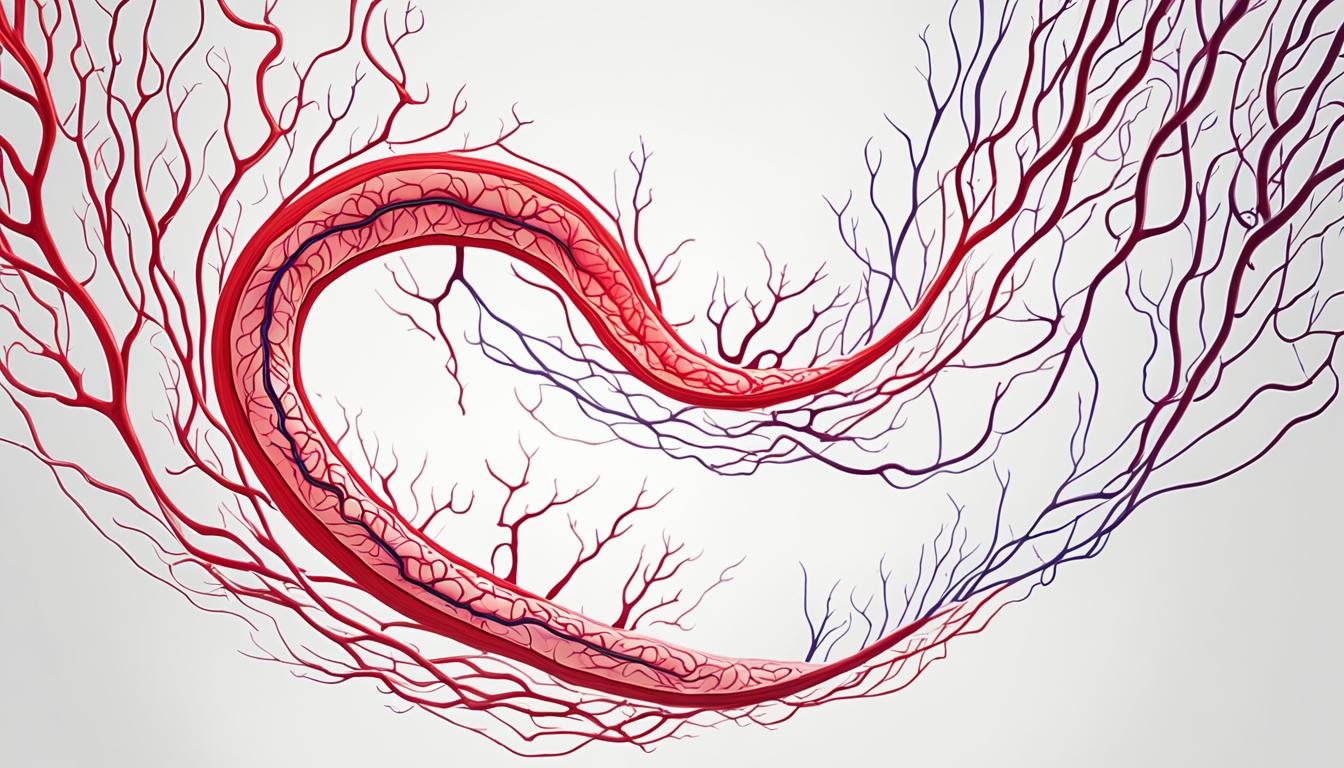Nonischemic priapism is when a man has a long-lasting and often painful erection without being sexually turned on. There are two types: ischemic and non-ischemic. Ischemic priapism, caused by a blockage in blood flow, is the more common type. Non-ischemic priapism, from a direct injury, is less frequent. It can be linked to conditions like sickle cell disease, pelvic tumors, infections, and certain drugs. Getting quick help is important to avoid lasting problems with getting or keeping an erection.
Key Takeaways:
- Nonischemic priapism can lead to a prolonged and uncomfortable erection, even without sexual excitement.
- It is classified into two types, ischemic and non-ischemic.
- Ischemic priapism is mainly due to a blockage in the blood drain of the penis.
- Non-ischemic priapism usually results from an injury to the penis.
- Conditions like sickle cell disease, pelvic tumors, infections, and certain drugs are often associated with it.
- Early treatment is crucial in preventing permanent erectile dysfunction.
Causes and Diagnosis of Nonischemic Priapism
Nonischemic priapism might happen because of different things. This includes trauma, tumors, infections, and certain medications. A big reason is trauma to your penis or perineum, often from accidents or surgeries. Tumors in the pelvic region and infections can also cause it. Finally, some meds, especially those for erectile dysfunction, could be a factor.
Diagnosing nonischemic priapism needs a full check-up. Doctors will ask about your medical past to find out possible causes. They’ll look closely at your penis and the area around it. They might also do tests like ultrasounds to check blood flow and if there are any problems in your tissues. These tests are key in figuring out if you do have nonischemic priapism and what’s causing it.
Getting the right diagnosis is important for planning the best treatment. Knowing the cause helps doctors create a treatment just for you. A quick and accurate diagnosis can relieve symptoms, prevent problems, and even stop long-term issues with your sex life.
Diagnostic Process for Nonischemic Priapism:
- Talk about your medical history to spot possible causes and risks.
- A deep look at your penis and the skin around it.
- Tests like ultrasounds or MRIs to see your blood flow and check for any issues in your tissues.
- Getting to a final diagnosis and knowing why you have nonischemic priapism.
Getting the right diagnosis is critical for dealing with nonischemic priapism well. Doctors and patients work together to find its cause and make a plan that’s just for you.
Stem Cell Therapy for Nonischemic Priapism
Stem cell therapy is becoming a hopeful option for treating nonischemic priapism. It works by using the regenerative power of stem cells to fix the penile tissue. Many times, this approach helps where other methods have failed.
The process is simple. Stem cells are injected right into the penis. This helps repair the tissue and improve how well a person can get an erection. It’s shown great early results, thanks to helping the body heal on its own.
There’s still a lot to learn about how well stem cell therapy works in the long run. Yet, the initial results are encouraging. This new method could bring big changes in the lives of patients, giving them hope for a better life.

